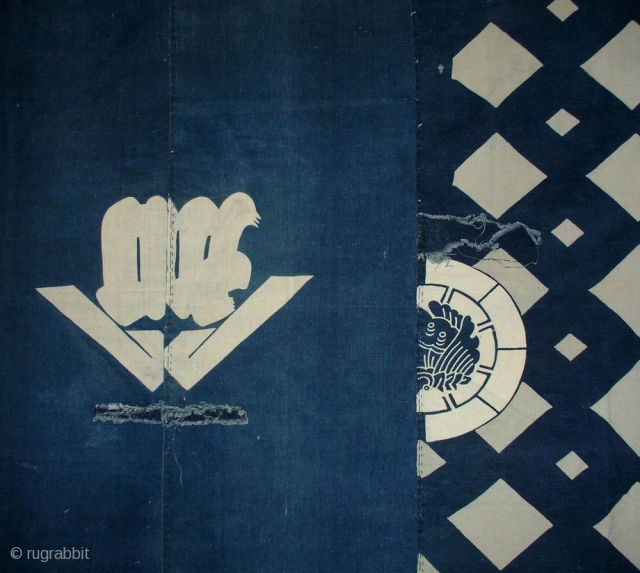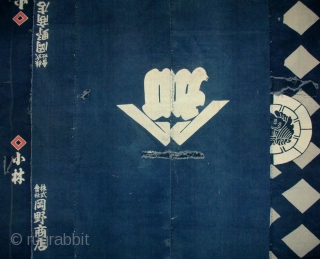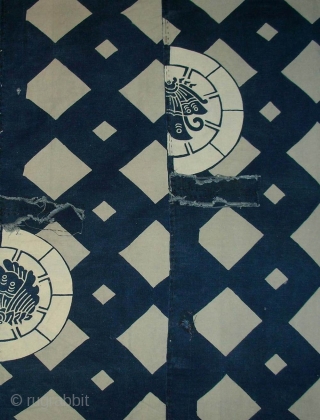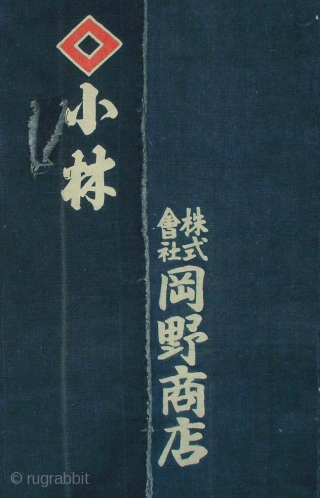Back
Boro futon cover, Japan, early Showa (circa 1930), cm 205x169. There is a class of Japanese folk textiles known as boro, which literally translated means "rags" or "ragged." Broadly speaking, boro textiles are the patched, mended and heavily stitched indigo-dyed cotton cloths whose history extends back to the nineteenth century and continues on through the early-to-mid twentieth century, and to fully appreciate they apart from their obvious artistic appeal, one has to delve into their history by understanding something of cotton's cultural significance in Japan. As a matter of fact, however, boro textiles have proven to be an aesthetically valuable art form, that mostly appeal to collectors of Contemporary Art, as well as to collectors of Tribal and Outsider Art. What we have here is a boro futon cover, made up recycling used happi (working coats) that are first cut into re-usable scraps, and then sewn together to form the futon cover. Maybe it doesn’t look much as the ‘standard’ multi-layered, hyper-patched and –stitched boro we might have seen around in ads or publications. It only had been obtained by joining spare parts from discarded coats, but the ‘accidental’ beauty obtained this way is one of the hallmarks for judging the quality of a boro piece. And this is a quality piece, no doubt. Not saying it is as valuable as Alberto Giacometti’s ‘L'Homme Qui Marche’ that sold last night at Sotheby’s London for just £65,000,000…. this boro is simply as visually arresting as that record sculpture, though ;-)
price:
SOLD
- Home
- Antique Rugs by Region
- Category
- Profiles
- Post Items Free
- Albums
- Benaki Museum of Islamic Art
- Budapest: Ottoman Carpets
- Gulbenkian Museum
- Islamic Carpets. Brooklyn
- Islamic Textiles. Brooklyn
- Konya Museum: Rugs
- MKG, Hamburg
- MMA: Caucasian Carpets
- MMA: Mamluk Carpets
- MMA: Mughal Indian Carpets
- MMA: Ottoman Carpets
- MMA: Safavid Persian Carpets
- MMA: Turkmen Rugs
- McCoy Jones Kilims
- Ottoman textiles. Met
- Philadelphia Museum
- Rugs and Carpets: Berlin
- Seljuqs at the Met
- TIEM, Istanbul: Carpets
- V&A: Classical Carpets
- Vakiflar Carpets: Istanbul
- Baluch Rugs: Indianapolis
- Gallery Exhibitions
- Jaf an Exhibition
- Alberto Levi Gallery
- Andean Textile
- Christie's London: 2016
- Francesca Galloway
- HALI at 40
- ICOC Washington, DC 2018
- Jajims of the Shahsavan
- London Islamic Week April, 2018
- Mongolian Felts
- Navajo Rugs: JB Moore
- Persian Piled Weavings
- SF Tribal & Textile Art Show 2020
- SF Tribal 2019
- Sotheby's: C. Alexander
- Turkish Prayer Rugs
- Turkmen Main Carpets ICOC 2007












